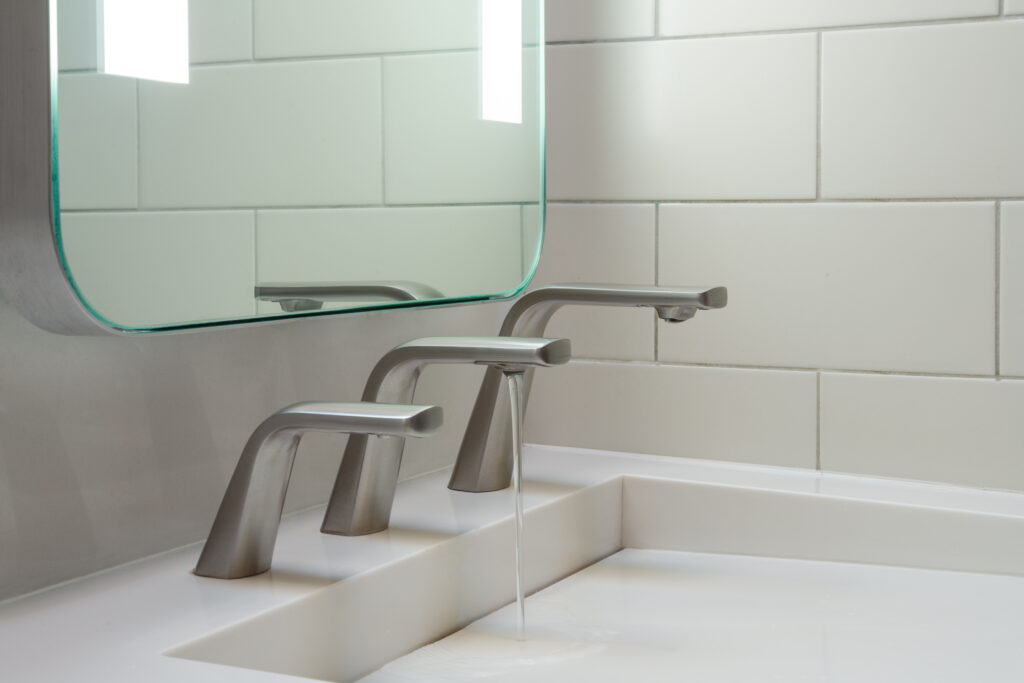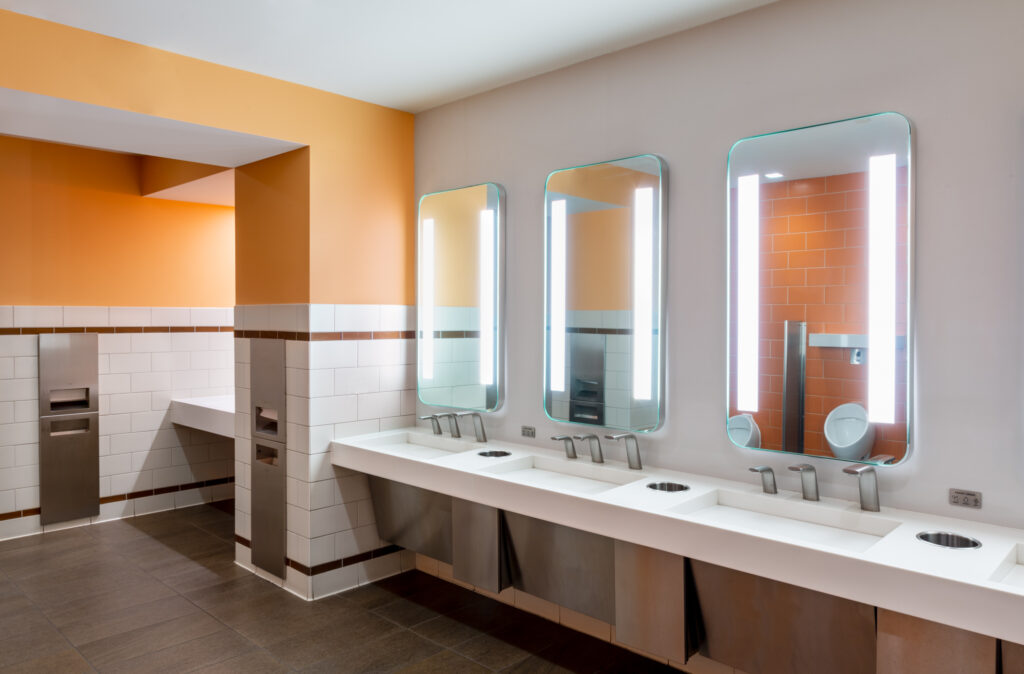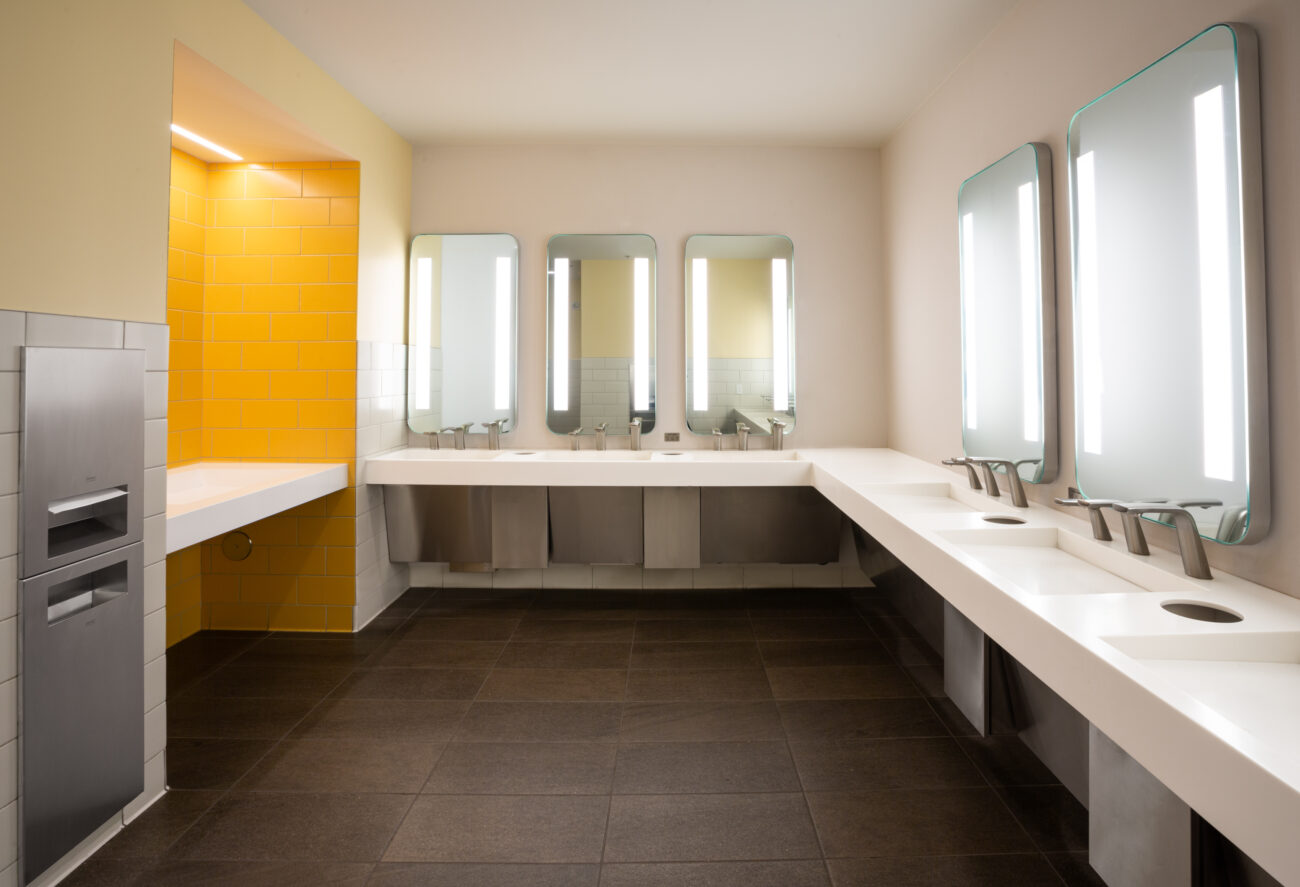Despite the best efforts of the Americans with Disabilities Act and organizations dedicated to creating a more accessible planet for those with mobility constraints, it seems that things like ADA restroom design continue to be a challenge. And really, it’s not all that surprising that this is the case. After all, creating a compliant space that is easy for people to access comes with far more hurdles than many people realize.
But unfortunately, there is more to the problem. Aside from creating accessible restroom spaces, there are many misconceptions—ADA restroom design myths—that can inadvertently convolute the process. And the result ends up being a space that is designed to the wrong specifications, resulting in a poor experience for the user, and some costly changes required for the business.
In this article, we’ll tackle some of the most common ADA restroom design myths. We hope that by helping you understand the potential traps and misunderstandings, that you’ll save time and money, resulting in a wonderful and highly accessible space for all people.
Let’s get right to it.


Myth # 1: ADA Compliance is Only for Wheelchair Users
While it's true that the accommodations for wheelchair users tend to be the most significant, they aren’t the only needs and requirements to be included in your architectural plans or design. There are about 3.3 million wheelchair users in the U.S. However, there are even far more people who require the aid of a mobility device such as a cane, walker, or scooter. This means that architects and designers need to think more broadly. Restroom design must address various needs, including clear and easily readable signage for those with visual impairments, auditory aids for individuals with hearing difficulties, and accessible fixtures like grab bars or lever handles that accommodate a wider range of mobility limitations.
Myth # 2: Following ADA Guidelines Makes Restrooms Look Institutional
This myth is so unfortunate—the mistaken belief that creating an ADA restroom design will result in a space that is drab or institutional in appearance. And we’re so happy to clear this one up. Not only is this myth so far off base, the reality is that when you incorporate ADA compliance into your restrooms, especially when pairing the design with high-quality furnishings and fixtures, that you can create beautiful restroom spaces that any user will be sure to love. Modern design innovations have made it possible to craft ADA-compliant restrooms that are both functional and visually appealing. Products like The Splash Lab’s minimalist fixtures, such as The Ribbon Collection and The Monolith, offer sleek, contemporary designs without sacrificing accessibility. These fixtures provide clean lines and elegant finishes, proving that compliance doesn’t mean compromising on style. Many high-end facilities have embraced this balance. The result? Beautiful spaces that are just as inviting as they are accessible.Myth # 3: ADA Grab Bars and Fixtures are One-Size Fits All
Before we address this myth, let’s talk for a brief moment about grab bars in particular. It’s so easy to overlook the significance of this one critical design element. As such, many bathroom designers omit these fixtures from their designs. And it’s an unfortunate mistake. Not only are grab bars a must to help those with mobility challenges to navigate a toilet room and the overall restroom area, but grab bars can be designed to blend in with the decor. But clearly, there’s more to it than that. ADA grab bars and fixtures are far from standard or one-size-fits-all. In fact, they offer a wide range of customizable options, allowing designers to choose styles, finishes, and materials that complement the overall aesthetic of the restroom. The Splash Lab’s ADA-compliant products, like the Monolith series sinks, are specifically designed for accessibility while also providing customization options. These modern fixtures integrate flawlessly with different design schemes. The result is a fixture that is both functional and stylish.Myth # 4: ADA Restroom Requirements are Costly and Complicated
We won’t beat around the bush on this one. There definitely is expense tied to creating an ADA-compliant restroom design. Whether accessible or not, business and commercial restrooms need toilets, sinks, soap dispensers, hand towel dispensers, lighting, etc. The misconception that ADA compliance is prohibitively expensive or overly complex can be debunked by looking at scalable solutions like The Splash Lab’s modular systems. Products such as their sinks offer flexibility, making it easy to meet accessibility requirements without overcomplicating the process. Additionally, designing an accessible restroom can have long-term benefits, including an improved user experience for all visitors. Businesses may also gain LEED points by incorporating accessible and sustainable fixtures. So, not only can you create a gorgeous ADA compliant restroom, you can incorporate sustainability in restroom design as well.
